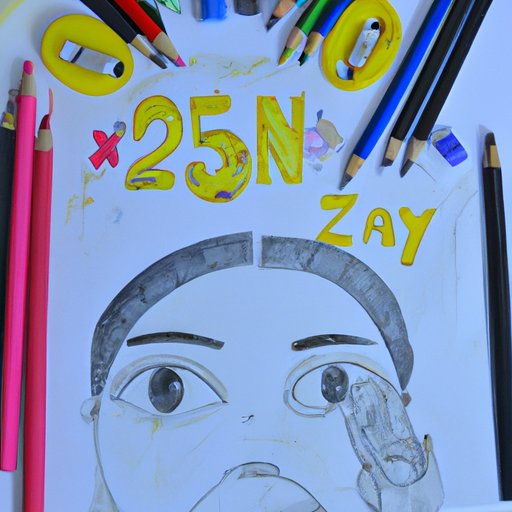Introduction
Drawing is an art form that has been around for centuries. It is the process of creating artwork by using pencils, charcoal, markers, pastels, and other media to create lines, shapes, forms, and textures on a surface. Drawing is a great way to express yourself and explore your creativity. From traditional drawings to modern digital art, there are many different ways to approach drawing.
Drawing Materials and Tools
When it comes to drawing, there are many different types of materials and tools that you can use. Pencils, charcoal, markers, pastels, and pens are all popular options for creating drawings. Each material has its own unique properties, so it’s important to understand how each one works before getting started. For example, pencils are great for detailed work, while charcoal is perfect for creating dynamic and dramatic effects. Markers are ideal for bold and colorful drawings, while pastels provide a softer look. Pens are great for fine-line work and can also be used to add texture and depth to drawings.
It’s also important to have the right tools when you’re drawing. For example, erasers, rulers, and templates can all be helpful in creating accurate shapes and lines. Brushes and blending tools can help you create smooth transitions and texture. And, of course, a good sketchbook is essential for any artist!
Different Styles of Drawing
There are many different styles of drawing, from realistic portraits to abstract illustrations. Realistic drawings strive to accurately depict people, animals, landscapes, and other objects. Abstract drawings focus on creating interesting shapes, forms, and textures without necessarily representing anything specific. Cartoon drawings use simplified shapes and exaggerated features to create lively characters and scenes. Impressionist drawings use quick, expressive strokes to capture the essence of a subject. No matter what type of drawing you prefer, it’s important to practice and experiment with different techniques to find the style that best suits you.
Drawing Inspiration
When it comes to drawing, inspiration can come from anywhere. Nature, architecture, and everyday life can all provide interesting subjects to draw. Looking at other artwork, such as paintings or photographs, can also be a great source of inspiration. It’s important to take time to observe your surroundings and look for interesting things to draw. You can also take inspiration from your own experiences and memories.
Drawing Exercises
Practice makes perfect when it comes to drawing. There are many different exercises that you can do to improve your skills. Creative exercises such as blind contour drawing can help you develop your eye for detail and accuracy. Other exercises like gesture drawing can help you capture the movement and energy of a subject. Drawing challenges, such as drawing a still life every day, can help you hone your skills and push your boundaries.
Drawing Tips and Tricks
When it comes to drawing, there are a few simple tips and tricks that can help you become a better artist. First, it’s important to keep your pencil sharp and your paper clean. This will help you create more precise lines and shapes. Second, take your time and don’t rush. Drawing takes patience, and it’s important to take your time and really look at what you’re drawing. Finally, don’t be afraid to make mistakes. Mistakes can actually be a great learning opportunity and can help you understand what works and what doesn’t work in your drawings.
Conclusion
Drawing can be a great way to express yourself and explore your creativity. Whether you’re a beginner or an experienced artist, there are many different materials, tools, and techniques that you can use to create beautiful drawings. Taking the time to find your inspiration, practice different styles, and experiment with new ideas can help you become a better artist. With a little bit of practice and dedication, you’ll be on your way to becoming a master artist!


